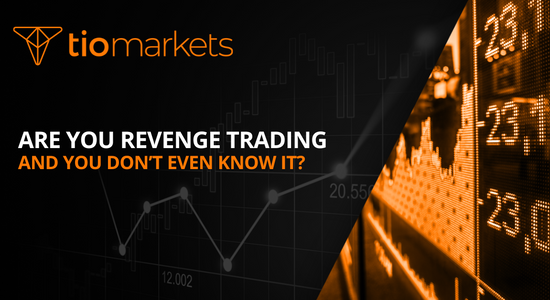How to Use Fibonacci Retracement in Mean Reversion Trading?
BY TIO Staff
|Jun 20, 2024The concept of mean reversion trading, coupled with the strategic use of Fibonacci retracement levels, offers a compelling approach for traders looking to capitalize on price movements within the cryptocurrency market. This article delves into the intricacies of employing Fibonacci retracement in the context of mean reversion trading strategies, providing a clear and concise guide for both novice and experienced traders.
Understanding Mean Reversion Trading
Mean reversion trading is predicated on the belief that asset prices and historical returns eventually revert to their long-term mean or average level. This trading strategy is particularly relevant in the volatile cryptocurrency markets, where price fluctuations are frequent and often extreme.
Basics of Mean Reversion
At its core, mean reversion trading seeks to exploit the natural ebb and flow of asset prices. Traders identify assets that have deviated significantly from their historical averages and bet on their eventual return to these levels. This strategy requires a keen understanding of market dynamics and an ability to identify when an asset is overbought or oversold.
Application in Crypto Markets
The cryptocurrency markets, known for their high volatility, present numerous opportunities for mean reversion trading. Crypto assets can experience rapid price changes, creating potential for significant gains when these assets revert to their mean. However, this approach also carries risks, necessitating careful risk management strategies.
Fibonacci Retracement Explained
Fibonacci retracement is a technical analysis tool used to identify potential support and resistance levels based on the Fibonacci sequence. Traders use these levels to determine strategic entry and exit points, making it an invaluable tool in the arsenal of a mean reversion trader.
Understanding Fibonacci Levels
Fibonacci retracement levels are derived from the Fibonacci sequence, a series of numbers where each number is the sum of the two preceding ones. Commonly used retracement levels include 23.6%, 38.2%, 50%, 61.8%, and 78.6%. These levels are believed to indicate key points where an asset's price may stall or reverse.
Integrating Fibonacci with Mean Reversion
Integrating Fibonacci retracement levels with mean reversion strategies involves identifying potential reversal points where an asset's price is likely to return to its mean. By overlaying Fibonacci levels on price charts, traders can pinpoint precise entry and exit points, enhancing the efficacy of their mean reversion strategies.
Implementing the Strategy
Successfully implementing a mean reversion strategy using Fibonacci retracement requires a systematic approach, encompassing market analysis, entry and exit strategy formulation, and risk management.
Market Analysis
Effective market analysis is crucial for identifying assets that are ripe for mean reversion trading. Traders should look for assets that have experienced significant deviations from their historical averages but show signs of exhaustion. Fibonacci retracement levels can then be applied to these assets to identify potential reversal points.
Entry and Exit Strategies
Defining clear entry and exit strategies is essential for capitalizing on mean reversion opportunities. Traders should consider entering a trade when an asset's price touches a key Fibonacci retracement level and exhibits signs of reversal. Exit strategies should be based on the asset returning to its mean or reaching a predetermined profit target.
Risk Management
Risk management is a critical component of any trading strategy, particularly in the volatile cryptocurrency markets. Traders should employ stop-loss orders to limit potential losses and adjust their position sizes based on the asset's volatility and their overall risk tolerance.
Pros and Cons of Using Fibonacci Retracement in Mean Reversion Trading
- Pros:
- Provides precise entry and exit points, enhancing trade accuracy.
- Helps identify key support and resistance levels, informing trading decisions.
- Can be combined with other technical indicators for a more robust trading strategy.
- Cons:
- Requires a thorough understanding of Fibonacci levels and their application.
- May not always accurately predict reversal points, leading to potential losses.
- Relies on historical data, which may not always be indicative of future price movements.
Advanced Strategies for Fibonacci Retracement
While Fibonacci retracement is commonly used in mean reversion trading, there are advanced strategies that traders can employ to enhance their trading performance. One such strategy involves combining Fibonacci retracement levels with other technical indicators, such as moving averages or stochastic oscillators, to confirm potential reversal points.
Combining Fibonacci with Moving Averages
By overlaying Fibonacci retracement levels on a chart that includes moving averages, traders can validate potential reversal points. When a Fibonacci level aligns with a moving average, it strengthens the signal for a possible trend reversal, providing traders with added confidence in their trading decisions.
Using Fibonacci Extensions
In addition to retracement levels, Fibonacci extensions can be used to identify potential price targets beyond the initial retracement levels. Traders can project where an asset's price may move after a retracement, allowing them to set profit targets or plan their exit strategies more effectively.
Psychology of Fibonacci Levels
Understanding the psychological aspects behind Fibonacci levels can provide traders with valuable insights into market sentiment and potential price movements. Traders often place buy or sell orders at Fibonacci levels, creating self-fulfilling prophecies that influence price action.
Golden Ratio and Market Sentiment
The golden ratio, represented by the 61.8% Fibonacci level, is considered a key psychological level in trading. When an asset's price approaches this level, traders may exhibit herd behavior, leading to increased buying or selling pressure and potentially causing price reversals.
Market Reactions to Fibonacci Levels
Traders closely monitor how the market reacts to Fibonacci levels, especially the 50% and 61.8% levels, which are seen as significant points of interest. If an asset's price struggles to break through these levels, it can signal a potential reversal or continuation of the current trend, guiding traders in their decision-making process.
Real-World Examples of Fibonacci Retracement
Examining real-world examples of Fibonacci retracement in action can help traders better understand how to apply this technical analysis tool effectively. Let's explore a hypothetical scenario involving a popular cryptocurrency, Bitcoin, and how Fibonacci retracement levels could have been used to identify potential trading opportunities.
Bitcoin Price Analysis
Suppose Bitcoin experiences a significant price surge, reaching an all-time high before retracing back down. By applying Fibonacci retracement levels to the price chart, traders can identify key support levels where Bitcoin's price may find temporary stability before potentially resuming its upward trend.
Trading Bitcoin with Fibonacci
Traders utilizing Fibonacci retracement in this scenario could consider entering a long position when Bitcoin's price approaches a key Fibonacci support level, anticipating a bounce back up. By setting a profit target at a Fibonacci extension level, traders can effectively manage their trades and maximize their potential gains.
Conclusion
Utilizing Fibonacci retracement in mean reversion trading offers a strategic approach for traders aiming to exploit price movements in the cryptocurrency market. While this strategy can provide precise entry and exit points, it requires a comprehensive understanding of market dynamics and diligent risk management. As with any trading strategy, success in using Fibonacci retracement for mean reversion trading depends on consistent application, continuous learning, and an ability to adapt to changing market conditions.
Start Trading with TIOmarkets
Ready to apply the Fibonacci retracement to your mean reversion trading strategy? Join TIOmarkets, the top-rated forex broker, and gain access to a wide range of markets including Forex, indices, stocks, commodities, and futures. With over 170,000 accounts opened in more than 170 countries, we provide a robust trading platform with low fees, over 300 instruments, and valuable educational resources to enhance your trading skills. Take the first step towards successful trading by creating your trading account today and unlock the potential of the financial markets.

Risk Disclaimer - of Liability: The authors, publishers, and distributors of this article are not responsible for any losses, damages, or liabilities that may arise from the use of the information contained herein. Readers are encouraged to seek professional advice from a qualified financial advisor before engaging in any trading activities.
By accessing this article, you acknowledge and agree that you are fully responsible for your trading decisions and any resulting outcomes. Always conduct thorough research and consider your financial situation, risk tolerance, and investment objectives before making any trading decisions.
Join us on social media

Behind every blog post lies the combined experience of the people working at TIOmarkets. We are a team of dedicated industry professionals and financial markets enthusiasts committed to providing you with trading education and financial markets commentary. Our goal is to help empower you with the knowledge you need to trade in the markets effectively.
Related Posts
undefined



